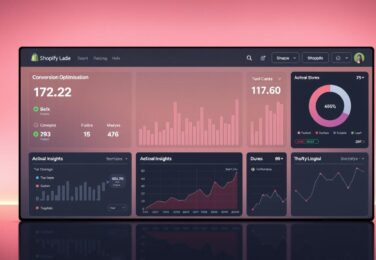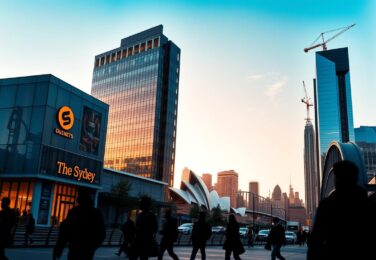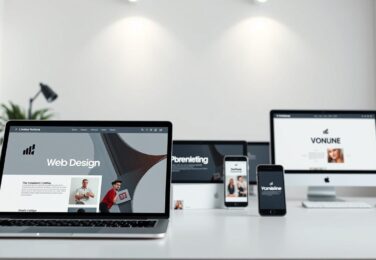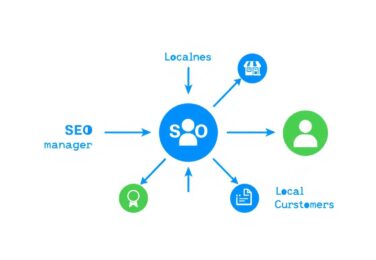Rebranding Success Stories: How Sydney Businesses Transformed Their Image
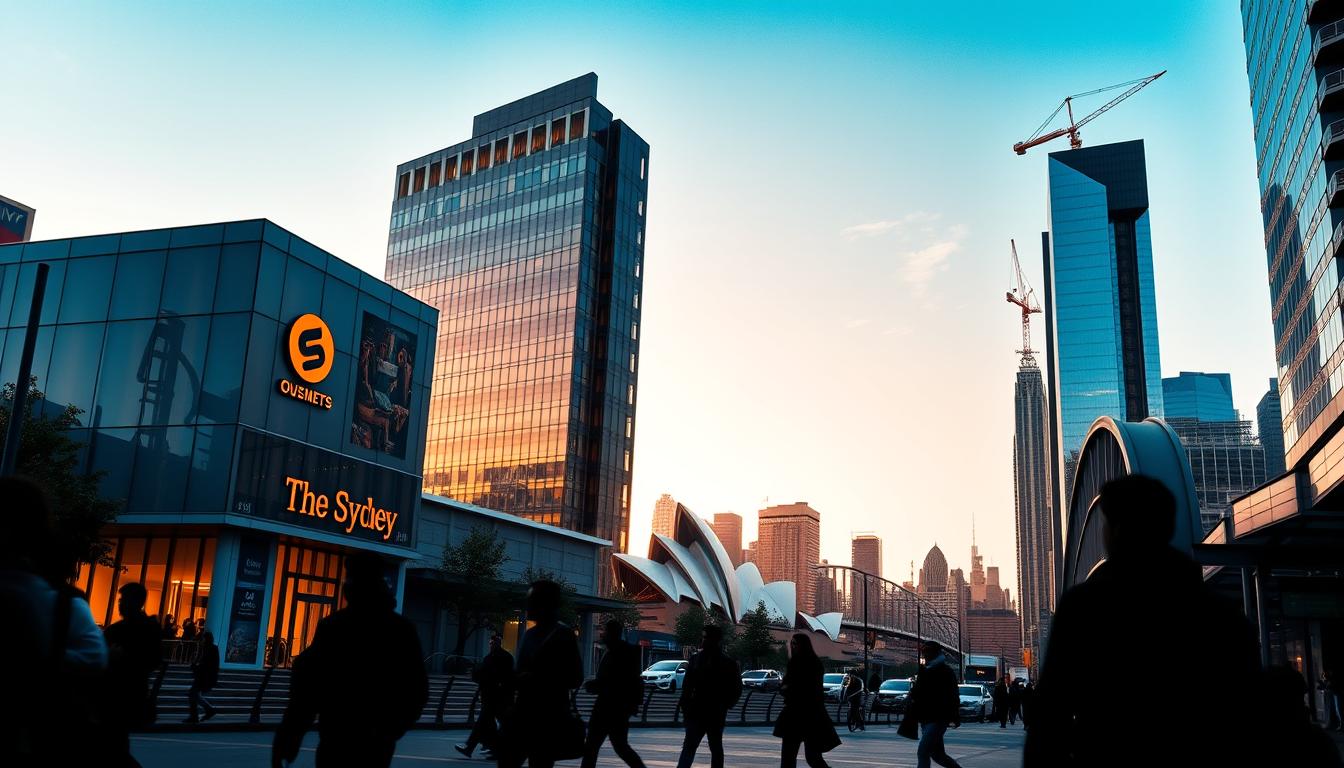
Table of Content
A cafe on King Street changed its look one morning. It got a new logo and menu that highlighted local suppliers. Soon, more people were coming in, and the owner was thrilled with the results.
Sydney is perfect for seeing how rebranding works. It has busy shopping areas, lots of restaurants, tech startups, and media that notices changes fast. This makes it great for studying what makes a rebrand successful.
We’ll look at how Sydney businesses used rebranding to get better results. We’ll use examples, best practices, and lessons learned to help you. We’ll cover the basics, steps to take, local examples, creative ideas, how to launch, choosing an agency, and measuring success.
We offer expert advice and practical tips, knowing the challenges of rebranding. Need design help? Email hello@defyn.com.au and we’ll guide you.
Key Takeaways
- Rebranding can quickly change how people see and interact with your business.
- Sydney’s fast feedback makes it a great place to test rebranding.
- We’ll explore the key elements, how to launch, and measuring success to help your rebrand.
- Local examples show the best rebrands and lessons you can use.
- Contact hello@defyn.com.au for customised support during your rebrand.
Why rebranding matters for Sydney businesses
Rebranding is more than just a change in look. It’s a smart move for Sydney businesses facing big changes. These include market shifts, changes in who lives here, and the move to digital.
So, why do Sydney businesses decide to rebrand? New digital players in finance and food delivery have changed the game. Also, rules have changed, and people want brands that care about the planet and local stuff.
How does a new look attract more customers? A clear message can draw in younger, diverse, and wealthier people. We’ve seen brands succeed by matching their message with what city folks and eco-conscious buyers want.
What signs show a rebrand has worked? Look at how many people know about the brand and how often they search for it. Also, check how sales and customer loyalty change over time. This shows how people’s views of the brand have shifted.
Before you start, do some research and talk to your customers. Test out new messages and looks online to see how they’ll do. This helps you know what to expect before you fully launch.
Don’t expect overnight success. Awareness and search will go up fast. But, it takes time for sales and loyalty to really grow as people get used to the new brand.
If you need help with rebranding or checking how it’s going, we’re here for you. Just email us at hello@defyn.com.au.
Understanding the core elements of a successful rebrand
We start by defining the essential building blocks of a successful rebrand. These include visual identity, messaging, and stakeholder engagement. These elements reduce risk and speed up adoption. Below, we break these elements into practical components you can apply right away.
Brand identity: logo, colour palette and tone of voice
What makes a dependable brand identity today? A logo must look good on screens, signs, and social media. It should be consistent on mobile and desktop.
Colour systems need rules for print and digital. We check contrast for accessibility and map primary and secondary palettes. This prevents colour misuse across campaigns.
Tone of voice guides every message. We have clear dos and don’ts for language and customer replies. This ensures everyone speaks with one voice.
Value proposition and positioning updates
Start with an audit of current promises. Separate features from benefits and test which claims matter to customers.
Repositioning can take different forms:
- Premiumisation: lift perceived value through product cues and pricing.
- Purpose-driven: align with social or environmental aims that matter to your audience.
- Convenience-led: highlight speed, simplicity or better access.
Each move must map back to measurable outcomes. This ensures a successful brand refresh drives clearer choices for customers.
Customer research and stakeholder engagement
Primary research proves or disproves assumptions. Use surveys, interviews, ethnography, and usability tests to learn what customers do and say.
Secondary data fills gaps. Analyse sales trends, CRM behaviour, and social listening to spot signals you can’t get from interviews alone.
Internal alignment is critical. Executive sponsorship, frontline staff input, and channel partner feedback stop surprises at launch and boost adoption.
Practical checklist of deliverables:
- Brand strategy document with objectives and KPIs.
- Visual identity system: logos, responsive marks, colour rules and usage guidelines.
- Messaging architecture that links value proposition to audience segments.
- Implementation roadmap covering digital, physical, and PR rollouts.
If teams are stuck on brand customisation with designers, contact hello@defyn.com.au for support and guidance on achieving one of the best rebrands.
rebrand business: practical steps to relaunch your brand
We help teams with a clear plan for launching a rebrand. This guide breaks it down into audit, strategy, and execution steps. It’s designed for Australian businesses ready to refresh their brand.
Audit your current brand and competitive landscape
First, review your brand’s visuals like logos and colours. Check your messaging and key claims. This helps you understand your current brand and where you stand against competitors.
Look at the customer journey from start to after they’ve bought from you. Compare yourself to competitors by looking at their market share and offerings. Use website and social media analytics to see how you’re doing.
- Outputs: brand scorecard, SWOT and competitor matrix.
- Tools: Google Analytics, social listening, CRM reports and simple survey panels.
- Deliverable: a concise audit report that flags quick wins and risks.
Develop strategy, creative brief and brand architecture
Identify your target audience and refine your value proposition. Agree on your brand’s personality and tone. This ensures a consistent voice across all channels.
Create a detailed creative brief with clear objectives and success metrics. Include what needs to be done, when, and who needs to approve it.
- Monolithic architecture suits tight, unified offers — useful for retailers expanding product lines.
- Endorsed architecture helps sub-brands gain credibility while keeping a parent identity visible.
- House of brands works when distinct products need separate positioning, common in FMCG.
Pick the architecture that works best for your brand. Discuss the pros and cons with examples from Australian brands.
Execute rollout: digital, physical and PR channels
Start with an internal launch to get your team on board. Then, update your website and apps. Refresh your social media and email templates next.
Next, focus on physical items like packaging and in-store displays. Make sure your CRM and loyalty systems are updated to avoid any issues.
- PR tactics: embargoed media previews, launch events, influencer seeding and paid social bursts.
- Technical needs: SEO redirects, domain and email migrations, trademark checks and supplier notifications.
- Measure early: traffic, conversion, sentiment and customer support volume.
Risk mitigation and pilots
Consider phased rollouts and pilot markets to test your new brand. Do usability tests and get feedback from real customers.
Have a plan for any unexpected issues. Keep everyone informed and have a clear way to escalate problems.
If you need help with complex design customisations, contact hello@defyn.com.au. They can assist with execution and coordinating with vendors.
Best rebrands in Sydney: notable local examples
We look at local examples that show how change can lead to success. These stories highlight smart moves, creative ideas, and the hard work behind big changes. They offer useful tips for anyone looking to rebrand their business or customer experience.
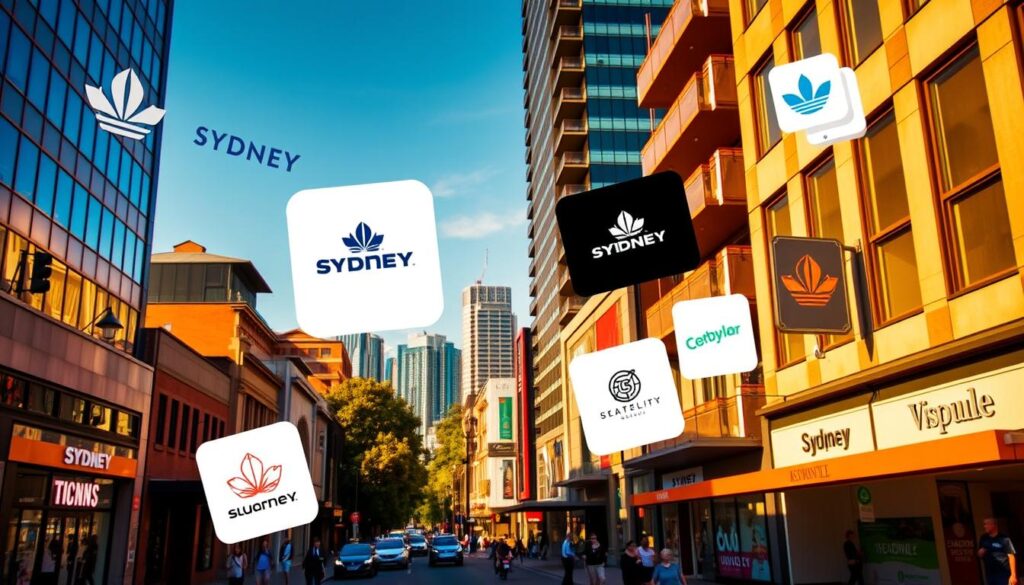
Case highlights: what each brand changed and why it worked
Qantas updated its look and in-flight experience to show it’s a top airline. It changed its colours, uniforms, and cabin features to show it’s reliable and high-quality.
Bunnings made small changes to make stores easier to use. It updated signs, layouts, and online tools to help customers find what they need.
A Sydney hospitality group changed from focusing on one place to many. It updated logos, service standards, and launched a shared loyalty program. This helped it grow and be recognised across different venues.
Lessons learned from high-visibility relaunches
- Having a clear plan is key: teams that link their work to goals do better.
- Getting everyone on board helps: training staff and using asset libraries stops mistakes.
- Testing new ideas in small areas is smart: it avoids big mistakes.
- Telling your story well helps: being proactive with media can win back trust.
- Not planning well can cause problems: bad communication can confuse and weaken your brand.
How local culture influenced the redesigns
Sydney’s projects reflect the city’s lifestyle: they use beach colours, active images, and diverse casting. They also highlight environmental values through material choices and messages.
Local food and hospitality brands focus on where things come from and when they’re in season. Retailers use photos of diverse families and local scenes to connect with Sydney’s diverse customers.
Practical takeaways for your rebrand business
- Begin with a clear brief: know who you’re targeting and what you want to achieve.
- Keep everything in one place: a brand hub stops mixed messages.
- Test, refine, repeat: try different things, get feedback, and track your progress.
- Reflect the local culture: show community values in your images, tone, and choices.
- If unsure, get help from Sydney rebranding experts to fit your local market.
| Brand | Core change | Why it worked | Practical tip |
|---|---|---|---|
| Qantas | Visual refresh and experience upgrades | Aligned premium positioning with consistent touchpoints | Coordinate visual and service changes together |
| Bunnings | Store layout, signage and digital integration | Improved usability while keeping trusted identity | Iterate retail changes to preserve core recognition |
| Local hospitality group | Portfolio brand architecture and loyalty program | Scaled recognition across venues and unified guest experience | Build shared systems for multi-site operations |
| Independent retailer | Photography, tone of voice and sustainability focus | Connected strongly with local, values-driven shoppers | Use imagery that reflects your customer community |
If you’re finding it hard to customise with a designer, contact hello@defyn.com.au. Sydney rebranding experts can help with strategy and execution.
Brand relaunch examples that transformed customer perception
We explore how small changes in identity and messaging can change how customers behave. Below are real stories of before-and-after transformations. These examples help any business plan a successful brand refresh.
Before-and-after stories of identity and messaging
A Sydney café once struggled with weekday visitors. Before the relaunch, menus were messy and prices hard to find. The team made the menu simpler, updated photos, and rewrote descriptions to focus on where ingredients came from.
After the relaunch, more people came in, and they spent more money. This happened in just a few weeks.
We also look at a professional services firm with old branding and unclear services. They made their services clearer, updated their website, and changed their logo. New clients found the value clearer, which meant they joined faster and asked fewer questions about prices.
Quantifiable outcomes: market share, recalls and sentiment
We track key metrics that often improve after a rebrand. These metrics help show the return on investment:
- Market share increase by looking at regional sales and customer numbers.
- Sales growth by comparing sales before and after the launch.
- Less customer complaints and support tickets.
- Better social media sentiment through social listening tools.
We suggest using simple yet effective measurement methods. Use surveys, Google Analytics, and cohort sales analysis to see the impact of branding changes.
Translating small tweaks into large gains
We show how small changes can make a big difference. For Australian SMBs, this includes menu changes for cafés, clearer service tiers for professionals, and faster checkout for online shops.
- Clearer CTAs: changing one word on a button can increase clicks.
- Simplified pricing: clear tiers can reduce customer doubts.
- Refreshed photography: better images can make products seem more valuable.
We recommend testing key changes with A/B experiments before a full launch. This helps validate ideas and reduces risks. For help in turning design changes into real results, email hello@defyn.com.au.
Design and creative direction: the visual side of successful brand refresh
We help clients make visual choices that shape how people see and use the brand. Good creative direction connects strategy to action. This makes the brand feel consistent everywhere, from screens to packaging.

Modernising heritage brands without losing authenticity
What do we keep and what do we change? We keep key elements like a legacy mark or colours that build trust. We make complex marks simple, so they work well everywhere, from big signs to small app icons.
We use stories to keep the brand’s heritage alive in updates. A short story about the brand’s start and values helps everyone accept new changes. In Australia, small updates can keep loyalty while attracting new people.
Typography, imagery and motion in contemporary branding
Which type is best for mobile screens? We pick fonts that are easy to read, with clear contrast and short lines. Fonts must meet guidelines for contrast and size.
Photos should show the diversity of Sydney’s people and places. Motion graphics make things clearer with animations and transitions. These animations should be light, focused, and work on all devices.
Working with designers and creative agencies
How do we work well together? Start with a clear brief that outlines goals, audiences, and technical needs. Agree on how to give and get feedback before starting.
We suggest using specialist designers for specific tasks like packaging and motion. Make sure to hand over all the necessary files and assets to avoid redoing work.
Deliverables checklist:
- Visual system and iconography
- Type hierarchy and scale guidelines
- Photography direction and image library
- Animation guidelines and motion tokens
- Developer assets: SVGs, style tokens and component code
| Design Area | Purpose | Key Deliverable |
|---|---|---|
| Logo & mark system | Ensure scalability and brand recognition | Primary, secondary and icon versions; SVG and PNG sets |
| Typography | Improve readability across devices | Type hierarchy, web fonts and size tokens |
| Colour & accessibility | Maintain contrast and cultural resonance | Accessible palette with WCAG ratios and usage rules |
| Photography & art direction | Reflect audience and context | Shot list, moodboards and image licensing guide |
| Motion & interaction | Guide micro-interactions and transitions | Animation library and JSON/Lottie exports |
| Governance | Keep assets consistent over time | Brand portal, versioning rules and approval workflow |
If you need help with customising assets or linking design to development, email hello@defyn.com.au. Our Sydney rebranding experts are here to help. For a rebrand business planning session, we share lessons from the best rebrands and practical steps to refresh your brand identity.
Launching a rebrand: PR, marketing and stakeholder buy-in
We start with a detailed plan for the launch. This plan makes sure everyone is on the same page. A smooth launch is key for any business looking to rebrand successfully.
Internal launch strategies for staff and partners
How do we get staff excited and ready to share the news? Begin with a meeting for leaders to explain the reasons and plans. Then, hold town halls and sessions for partners to answer their questions.
- Publish an internal brand toolkit with templates, logos and tone guidance.
- Create FAQ documents and run role-specific training for customer-facing teams.
- Equip employees with shareable assets and short talking points to amplify the message.
Public launch tactics: events, media and social rollouts
What’s the best way to share the news with the public? Start with a soft launch to key customers and partners. Make sure everything is ready, like websites and legal checks, before sharing it widely.
- Draft press releases and embargo schedules for media outreach.
- Plan launch events—virtual streams or in-person gatherings—timed with the announcement.
- Design a phased social campaign with owned content, influencer partnerships and paid amplification.
Crisis management and mitigating confusion
How do we handle any problems that might arise? Prepare for common issues and have a team ready to act fast. Keep a list to update things quickly.
- Identify common confusion sources: inconsistent signage, missing redirects and product labelling mismatches.
- Create an escalation path for urgent fixes and appoint a rapid-response team.
- Track sentiment in real time and push corrective messaging where needed.
How do we know if the rebrand is working? Look at things like media coverage, website visits, and customer feedback. Use this feedback to make any needed changes.
If you need help with the launch or have questions, contact hello@defyn.com.au. We’re here to help make your brand refresh a success.
sydney rebranding experts: when to hire outside help
We help teams decide between doing it themselves or getting sydney rebranding experts. Small changes can be done in-house. But, big rebranding, many channels, or tech work often need outside help.
Which agency is right for your project? We help you choose wisely.
Choosing the right agency for scale and industry fit
- Boutique design studios are great for focused identity work and creative systems.
- Full-service agencies are best for big rebrand projects needing strategy, PR, and digital work.
- Specialised consultancies are good for change management, stakeholder alignment, or large UX development.
- Look for relevant experience, a strong portfolio, technical skills, and a good team culture fit.
Questions to ask prospective partners
- What was the strategy behind past rebrands and what results did they get?
- How do you measure successful rebranding in our sector?
- Who will lead our project and what’s the team like?
- What will you deliver and how will you hand it over?
- Can you show us some of your best rebrand work and references?
Budgeting and timelines for agency-led projects
Use these ranges as a starting point. Adjust based on your project’s scope and complexity.
| Phase | Typical duration | Cost drivers | Expected outcomes |
|---|---|---|---|
| Discovery | 2–6 weeks | Stakeholder interviews, research depth | Evidence-based brief and audit |
| Strategy & concepting | 4–8 weeks | Market analysis, positioning workshops | Platform, messaging and visual direction |
| Design & production | 6–12+ weeks | Number of assets, packaging, motion, digital builds | Final identity, templates and development handover |
| Rollout | 4–12 weeks | Signage, PR, digital deployment, staff training | Launch materials, internal adoption and public launch |
Things that affect cost: how many assets you need, bespoke development, packaging, and stakeholder groups. A big rebrand with many touchpoints will cost more and take longer.
Procurement and risk management tips
- Ask for fixed-scope proposals with clear milestones and acceptance criteria.
- Include retention windows for iterative work and post-launch fixes.
- Link milestone payments to KPIs where possible to align outcomes.
- Request measurable case studies of the best rebrands in similar industries.
If you’re unsure about choosing an agency or need help with your rebrand, contact hello@defyn.com.au. We guide teams through successful rebranding with practical advice and hands-on help.
The future of branding: trends shaping rebranding success
In Sydney, businesses are changing how they rebrand. They now focus on purpose, personal experiences, and memorable moments. This guide will show you key trends for a successful brand refresh. The future of branding shaping everyones rebranding journey.
Sustainability, purpose-driven branding and authenticity
Customers want brands to be transparent and have a real purpose. Patagonia and Aesop are great examples of this. They match their actions with their messages.
To avoid greenwashing, set measurable goals and publish reports. Make sustainability part of your product and partnerships. This builds trust during a brand refresh.
Personalisation, CX and brand experience integration
Personalisation is key in rebranding. Gone are the days of one-size-fits-all campaigns. Customers want experiences tailored to them, across all touchpoints.
Protecting data is vital in Australia. Use consent-first design and local data storage to keep trust high during a rebrand.
Technology, AR/VR and interactive brand moments
AR and VR can add value in many ways. They can enhance retail, signage, and storytelling. Start with small pilots to test demand.
Scale tech pilots based on results. Run experiments, measure outcomes, and choose experiences that improve CX and support rebranding.
Strategically mix timeless brand elements with new tech. Keep core values while testing new ways to engage customers. This drives a successful brand refresh.
Need help applying these trends? Contact hello@defyn.com.au for support and planning.
Measuring successful rebranding outcomes
We set clear goals before a relaunch so we can measure success easily. Good measurement shows how brand work affects business. This proves the value of rebranding business assets and communications.
KPIs to track during and after a relaunch
Which numbers tell the story? We use a balanced set of KPIs. These reflect awareness, behaviour, and operations.
- Brand awareness: organic search volume, branded search trends and pulse surveys.
- Conversion rates: landing pages, funnels and campaign-specific goals.
- Average order value and customer retention rates to measure commercial lift.
- NPS and customer satisfaction for loyalty signals.
- Social sentiment and share of voice across key channels.
- Website engagement: session duration, bounce rate and task completion.
- Operational KPIs: call volumes, support tickets and fulfilment errors.
We recommend short-, medium- and long-term benchmarks. This lets teams see progress after launch.
Combining qualitative and quantitative feedback
Numbers show what changed. Words explain why. We pair analytics with direct customer feedback for a clearer picture of success.
- Customer interviews and focus groups uncover motivations and pain points.
- Usability testing validates new site flows and messaging.
- Sentiment analysis flags emerging issues at scale.
- Cohort analytics traces behaviour shifts by acquisition date or campaign.
We triangulate findings. A spike in metrics without qualitative insight prompts further research.
Iterating the brand post-launch for continual improvement
Rebrands are not one-off events. We plan iterative cycles to embed success across touchpoints.
- Rapid tests and design sprints for quick wins.
- Quarterly brand reviews with stakeholders to assess KPIs and creative assets.
- Governance rules and a central asset repository to reduce misuse and drift.
We build a post-launch dashboard and schedule regular stakeholder reviews. This lets us course-correct quickly when metrics, sentiment or operations diverge.
For teams that need help building measurement frameworks or customising post-launch plans, email hello@defyn.com.au. We offer tailored support on rebrand business projects and explore practical brand relaunch examples.
| Metric | Why it matters | Short-term target (0–3 months) | Medium-term target (3–12 months) |
|---|---|---|---|
| Branded search volume | Shows immediate awareness and recall | 10–25% uplift versus baseline | 30–60% uplift with ongoing campaigns |
| Conversion rate | Direct revenue impact from new messaging | Stable or +5% after launch | +10–20% following optimisation |
| Net Promoter Score (NPS) | Indicator of loyalty and referral | Maintain baseline or small decline as customers adapt | Net improvement of 5–15 points |
| Social sentiment | Early warning for reputation risks | Neutral to positive within weeks | Positive trend as messaging lands |
| Customer retention | Long-term commercial health | Hold baseline | Increase by 5–10% with product and CX alignment |
| Operational KPIs | Execution quality and customer experience | Reduced ticket spikes within 4–6 weeks | Fewer than baseline issues after process fixes |
Conclusion
Rebranding is more than just a change in look. It’s a strategic move that starts with understanding your customers and your brand’s goals. Even small changes can make a big difference if they meet customer needs and your brand’s capabilities.
In Sydney, we’ve seen how important it is to fit the brand with the culture. Local examples show that getting everyone on board, testing ideas, and updating both online and offline spaces carefully is key. This approach helps your brand succeed not just locally but globally too.
So, what’s next? Start with a detailed brand check-up to find the most impactful changes. Get your team ready and plan a step-by-step update with clear goals. If you need help with making your brand unique or managing your team, reach out to hello@defyn.com.au. We offer technical know-how and hands-on support to help your brand thrive.


